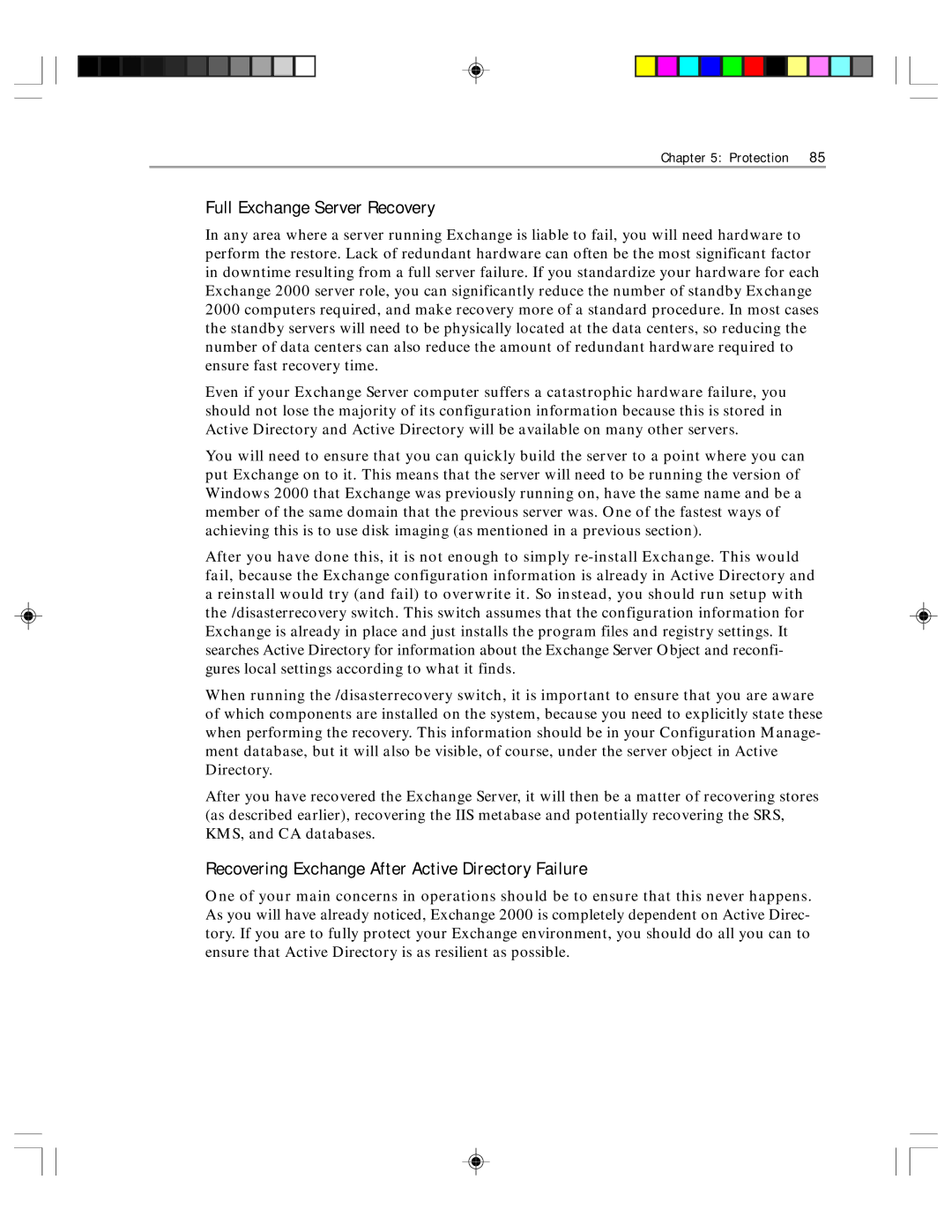
Chapter 5: Protection | 85 |
Full Exchange Server Recovery
In any area where a server running Exchange is liable to fail, you will need hardware to perform the restore. Lack of redundant hardware can often be the most significant factor in downtime resulting from a full server failure. If you standardize your hardware for each Exchange 2000 server role, you can significantly reduce the number of standby Exchange 2000 computers required, and make recovery more of a standard procedure. In most cases the standby servers will need to be physically located at the data centers, so reducing the number of data centers can also reduce the amount of redundant hardware required to ensure fast recovery time.
Even if your Exchange Server computer suffers a catastrophic hardware failure, you should not lose the majority of its configuration information because this is stored in Active Directory and Active Directory will be available on many other servers.
You will need to ensure that you can quickly build the server to a point where you can put Exchange on to it. This means that the server will need to be running the version of Windows 2000 that Exchange was previously running on, have the same name and be a member of the same domain that the previous server was. One of the fastest ways of achieving this is to use disk imaging (as mentioned in a previous section).
After you have done this, it is not enough to simply
When running the /disasterrecovery switch, it is important to ensure that you are aware of which components are installed on the system, because you need to explicitly state these when performing the recovery. This information should be in your Configuration Manage- ment database, but it will also be visible, of course, under the server object in Active Directory.
After you have recovered the Exchange Server, it will then be a matter of recovering stores (as described earlier), recovering the IIS metabase and potentially recovering the SRS, KMS, and CA databases.
Recovering Exchange After Active Directory Failure
One of your main concerns in operations should be to ensure that this never happens. As you will have already noticed, Exchange 2000 is completely dependent on Active Direc- tory. If you are to fully protect your Exchange environment, you should do all you can to ensure that Active Directory is as resilient as possible.
